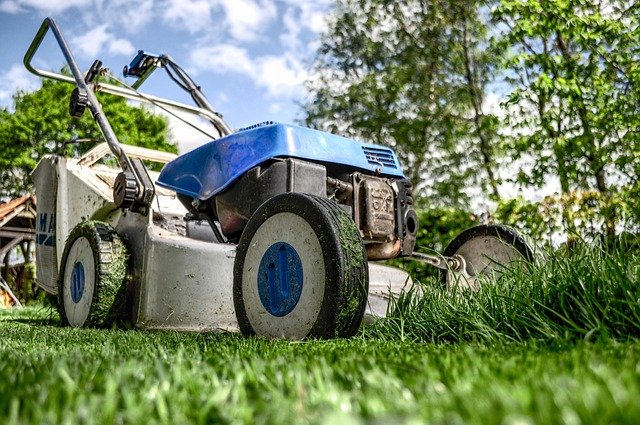Selecting the Right Equipment for Efficient Root and Base Removal
Removing tree roots and bases effectively requires the right combination of equipment, site planning, and safety practices. This article explains how to choose machinery, when rental makes sense, how to handle woodchips and mulch, and what contractors typically consider for site preparation and excavation.

Choosing the appropriate machinery for removing tree roots and bases depends on the scale of the task, site access, and the desired final surface. For small yardwork jobs, compact, walk-behind machines handle shallow roots and limited spaces. Larger properties or forestry sites often require self-propelled or attachment-style equipment to cut deeper and work faster. Consider how removal will affect landscaping plans, whether you want woodchips for mulch, and how excavation might be needed to expose larger roots.
What equipment suits root removal?
Equipment selection should match root size, soil conditions, and clearance. Walk-behind grinders are suitable for small trunks and tight yards, while mid-sized machines work for medium roots and moderate terrain. For heavy forestry work or large stumps, larger grinders or excavator-mounted attachments provide the necessary power and reach. Contractors also evaluate the need for protective guards and debris management tools to collect woodchips and protect surrounding landscaping during work.
When should you rent versus buy equipment?
Renting is often cost-effective for one-off projects or occasional yardwork. Rental options let homeowners access reliable equipment without maintenance responsibilities. Buying makes sense for contractors or frequent users who need consistent availability and long-term value. Compare local rental rates, delivery fees, and the expected number of jobs per year. Factor in equipment maintenance, storage, and depreciation when debating purchase versus rental for landscaping or ongoing siteprep tasks.
How to manage safety during removal?
Safety planning reduces risk for operators and bystanders. Use personal protective equipment, including eye and ear protection, gloves, and sturdy footwear. Secure the work area, watch for buried utilities, and ensure machinery operators are trained in equipment controls and emergency shutdowns. Proper maintenance also prevents failures that cause accidents. For contractors and forestry teams, a site-specific safety plan that includes spill control and traffic management is essential when working near excavation zones.
What maintenance keeps equipment reliable?
Regular maintenance extends machine life and maintains performance. Routine checks include fuel and hydraulic fluid levels, air filters, blade or carbide tooth wear, and track or tire condition. Clean woodchips and debris from cooling systems to prevent overheating. Schedule professional service for drivetrain and engine inspections. For rental users, document any issues at pickup and return to avoid unexpected charges; contractors should keep a maintenance log to manage uptime on job sites.
How to handle mulch and woodchips after removal?
Woodchips and mulch generated during removal can be a useful byproduct. Chips from healthy wood are appropriate for landscape mulch, pathways, or as erosion-control material on site. For wood destined for reuse, screen or sort chips to remove soil and large root fragments. Some contractors offer chipping and hauling as part of siteprep services; homeowners might opt to collect chips for garden use or arrange for local disposal depending on volume and local yardwork regulations.
How do providers compare on cost and availability?
Below is a comparison of common product/service options and providers to give a sense of cost and availability for equipment, rental, or purchase.
| Product/Service | Provider | Cost Estimation |
|---|---|---|
| Walk-behind grinder (daily rental) | Home Depot Tool Rental | $60–$120 per day |
| Mid-size self-propelled grinder / commercial rental | United Rentals, Sunbelt Rentals | $250–$600 per day; purchase $10,000–$40,000 |
| Attachment grinders for mini-excavators | Manufacturer dealers (e.g., Fecon, Husqvarna dealers) | Purchase $2,000–$12,000; rental varies by dealer |
| Large professional grinders / truck-mounted units | Vermeer, Rayco dealers | Purchase $30,000–$90,000; rental limited to specialty centers |
Prices, rates, or cost estimates mentioned in this article are based on the latest available information but may change over time. Independent research is advised before making financial decisions.
These estimates illustrate typical ranges for rental and purchase across common providers; exact costs depend on location, machine model, delivery, and seasonal demand. When comparing options, include transport, fuel, damage waivers, and any disposal or mulch processing fees to arrive at a realistic project budget.
Selecting the right equipment for efficient root and base removal balances machine capability, site constraints, safety practices, and cost considerations. Whether working on a home yardwork project or coordinating larger landscaping and excavation tasks, understanding the trade-offs between rental and ownership, maintenance needs, and how to repurpose woodchips will lead to cleaner results and better long-term outcomes.





